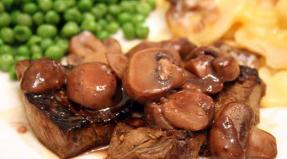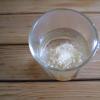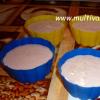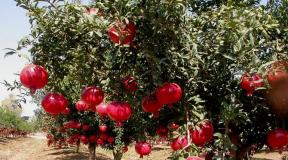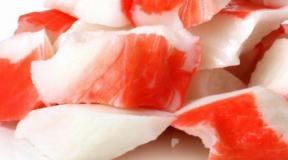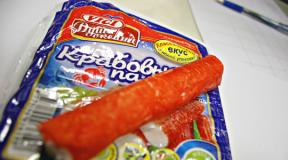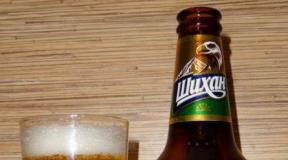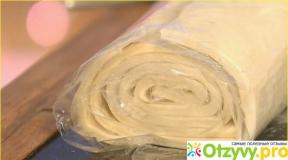Little tricks of a good hostess. How to make jam
I love this activity since childhood, when I did not really cook myself, but only helped my mother and grandmother. There is some kind of naturalness, solidity and calmness in this. And if you cook jam in a copper basin, in general, I don't know why, but you feel like a real lady.
Mom and grandmother always cooked " long". They made sure that the syrup remained clear and the berries retained their shape. To do this, it is boiled for several days - each time only by bringing it to a boil and leaving it to infuse before the next heating. I love this kind of jam, but at some point I thought about other options.
Firstly, I have always liked the rare fallen berries more. Like cookie crumbs or meat on the bone, they have an irresistible charm. And secondly, when the season is in full swing and you really need to cook a lot of fruits, you also start to worry about speed. So I moved on to quick jam.
Berries and fruits
This method works best with strawberries, apricots, and plums. It works well with peaches and nectarines. Depending on the volume of fruit, the process takes from 30 minutes to 1 hour. The result is a thick, non-uniform with a very bright color and taste of the original product. The required ingredients are only the fruits / berries and sugar themselves.
For varieties, medium-sized bright orange apricots with red barrels are best suited ( they are quite sour and juicy, the jam benefits from this). From plums - prunes ( dark elongated plums with a blue, frost-like bloom). Any strawberry is good, even a little unripe.
Sugar
Like many people, I try to put in jam less sugar. But since it is critically important for me that it is well stored all year round without a refrigerator, I cannot put less than 70% of the weight of fruits / berries. If you have a capacious refrigerator or cellar, you can lower the proportion to both 50% and 25%.
Tableware
In addition to fruits and sugar, you will need cooking utensils and storage containers. In cooking utensils, the main dimension. The wider the pan, the better. In this case, thanks to a thin layer and a large evaporation area, the jam is cooked faster and retains the maximum color and taste. If there is a copper basin, great. If not, steel and aluminum pots are fine too.
In my opinion, it is most convenient to store in glass jars with ordinary screw lids, which are always abundant in the household. Through simple home sterilization, they turn into a reliable container.
How to make jam
 First you need to prepare the fruit. From strawberries - tear off the tails, from apricots and plums - remove the seeds and cut into halves or quarters. Slightly overripe barrels may not be cut off, but if mold is visible somewhere, it is imperative to remove it.
First you need to prepare the fruit. From strawberries - tear off the tails, from apricots and plums - remove the seeds and cut into halves or quarters. Slightly overripe barrels may not be cut off, but if mold is visible somewhere, it is imperative to remove it.
Prepared fruits need to be weighed and sugar measured in relation to them ( at your discretion, 700 g - 1 kg for jam stored at room temperature, and 250 - 700 g for jam stored in the refrigerator).
In a saucepan with a diameter of 28-30 cm, it is better to cook no more than 3 kg of fruit at a time. And in a smaller saucepan, respectively, less. If all the fruits do not fit in one meal, it is better to divide them into two or three servings. Otherwise jam will have to cook for a long time, from which it can turn brown and lose its taste and aroma.
Put fruit in a saucepan, pour in half a glass of water and put on fire. First, strong, and when the water boils, reduce to weak. Cover and cook for about 10 minutes. The fruit should settle and release a lot of juice. If you do not have time, cook for another 5-10 minutes.
Remove the lid and add sugar. Stir and bring to a boil over medium heat. Now, stirring occasionally, the jam must be cooked without a lid. Depending on the amount of fruit / berries and the thickness of the layer, it will take 20 to 40 minutes. As it cooks, the color will deepen and the syrup will become clearer. It's a pleasure to watch! Taste the jam along the way and add some lemon juice if you feel like it.
To check doneness, place the saucer in the freezer for 15 minutes. Place a teaspoon of jam syrup on a cold saucer, return to the freezer for 30 seconds and remove. If the syrup has grabbed into a confident jelly and does not flow when the saucer is tilted, then it's done. Turn off the fire.
Sterilization
 Prepare jars and lids. By volume - from 1 kg of fruit boiled with 1 kg of sugar, approximately 1.6 liters of jam are obtained. The size of the cans does not matter. The main thing is that the covers are not damaged and that they are screwed on tightly. Boil the kettle and scald the jars with boiling water ( above all - inside and outside around the thread). Place the lids in a bowl and pour boiling water over too. In terms of severity, this procedure is far from real sterilization, but it is quite enough for storing homemade jam.
Prepare jars and lids. By volume - from 1 kg of fruit boiled with 1 kg of sugar, approximately 1.6 liters of jam are obtained. The size of the cans does not matter. The main thing is that the covers are not damaged and that they are screwed on tightly. Boil the kettle and scald the jars with boiling water ( above all - inside and outside around the thread). Place the lids in a bowl and pour boiling water over too. In terms of severity, this procedure is far from real sterilization, but it is quite enough for storing homemade jam.
Storage
Spill jam the banks need to be hot. If it has cooled down, bring it to a boil again. Fill the cans completely. Then screw the caps on tightly. Almost no air gets into a full can. And due to the fact that the jam is already cooling in a closed jar, the lid seems to be pulled inward and a very reliable lock is obtained, which then opens with a characteristic click. Store in a dark and as cool place as possible.
And then, on cool winter evenings, take out, spread on buns and toasts with butter, add to homemade pies, pour into porridge or tie the jars with a ribbon and give with a smile to good people.
"What to do?" - asked the impatient Petersburg youth. - “How to do what: if it's summer - peel the berries and make jam; if it's winter - drink tea with this jam. " Vasily Rozanov, "Embryos" cycle (1918).
Indeed, how great it is to open a jar of thick, bright homemade jam smelling of the summer sun and warmth! A delicacy that has preserved the taste, color and aroma of fresh berries can cheer you up, warm your soul and even bring people closer together during tea drinking ...
There are a number of techniques due to which the jam will turn out to be ideal not only in its taste, but also preserve all the vitamins and useful microelements that are necessary in the autumn-winter period.
The best preparations are obtained only from ripe, fresh and whole berries and fruits. Jam does not tolerate rot: it is better not to succumb to the temptation and not to buy rumpled discounted fruits.
To wash the fruits without damaging them, plug the sink with a stopper, draw in water and put them there to float, stirring gently with your hands. Then let the water drain.

After washing, you can remove the petioles and stalks. You don't need to do this before.
One of the most important nuances is sugar. Remember that berries are different, and the amount of sugar will depend on the sweetness of the raw materials. You can vary the ratio as you like, but keep in mind that excess sugar crystallizes during storage!

To set off the taste of the jam, make it more intense, you can use various additives, for example, vanilla perfectly complements raspberries, pears go well with cardamom and pink peppercorns, and cocoa is ideal for plums ... Try it!
Tableware
Our grandmothers made jam in copper basins. Such dishes provide uniform heating of the mass without burning, but does not contribute to the preservation of vitamins. Containers made of stainless steel are considered universal: they are durable and do not oxidize. Use a divider to avoid burning. It is also good to use enameled dishes, but provided that the enamel is completely intact.

Cooking
When heated, the berry-sugar mixture begins to actively bubble. Reduce heat; stir not too vigorously. Carefully remove the resulting foam in a separate bowl: it is so tasty!
A simple way to check the readiness of the jam: scoop the syrup with a teaspoon, pre-chilled in the freezer, cool and place again for 5 minutes in the freezer. Taking out the spoon again, you should see a thickened mass that holds its shape well.
Do not pour the jam into jars up to the very neck, leave 1–1.5 cm.

To avoid mold and spoilage of the product, first cover the neck of the jar with wax paper, and then only the lid.
Properly cooked and sealed, jam can be stored for up to 3 years. But what sweet tooth will have it for so long ?!
Aromatic jam, smelling of the sun and warmth, is especially pleasant to taste in the winter cold, remembering the summer. It is difficult to imagine a family tea party without fragrant jam, which is loved by both children and adults. Tea with a tempting dessert brings people together, gives you the opportunity to socialize and enjoy a delicious dessert. The jam, which has preserved the taste of natural berries, not only cheers you up and gives you a piece of summer warmth, but also fills you with energy, because it contains all the necessary vitamins, minerals and trace elements. Each housewife has her own secrets of how to properly cook delicious jam from strawberries, raspberries, currants, gooseberries, cherries, apricots, and especially delicate connoisseurs know how to properly cook jam from rose petals or walnuts. But we'll talk about making classic homemade jam, which will turn out delicious and aromatic if you approach the matter with heart.
Homemade jam secrets
The ideal jam looks like this: a thick and transparent syrup, in which berries or pieces of fruit are evenly distributed. Real jam is not only tasty, but also attractive when cooked correctly. Let's try?
How to cook raspberry, apple and strawberry preserves

Jam is made from any berries and fruits - both traditional for our area and exotic, such as mango and papaya. Some lovers of unusual desserts make jam from carrots, green tomatoes, cucumbers, pineapples, bananas, oranges and chestnuts. The jam can be thin and thick, very sweet, or with a hint of sweetness, made with sugar or honey. There are many ways to process fruits, make syrup and make jam, among which everyone can choose the right one. However, there are general rules for cooking and some subtleties that every housewife should know, no matter what recipe she uses.
Fruits and berries - beautiful, aromatic and slightly unripe

Choose only good quality fruits, preferably locally grown, as they retain their natural flavor and aroma. If you come across bad berries, you are unlikely to get an appetizing dessert, even if you know how to properly make strawberry, cherry or guava jam. Most often, slightly unripe fruits are taken for jam, since they have dense pulp and do not deform during cooking, with the exception of cherries and plums, which should be juicy enough. When choosing berries and fruits on the market or in the supermarket, be picky and make sure that the fruit and berry raw materials do not have external imperfections - dented sides, dark spots, dots and mechanical damage. The berries must be whole and not wrinkled. If you have a garden plot, pick fruit for jam in sunny weather, as berries picked in the rain absorb a lot of moisture and boil.
Copper basin - just right for making jam!

The jam is best cooked in copper, aluminum, steel bowls or pans that are perfectly clean and free from rust. Copper is the most suitable material for jam as it helps preserve the natural flavor and color of the berries. It is important to ensure that a green layer of copper oxides, which are hazardous to health, does not form on the surface of the copper cookware. Do not use enamel pots - jam very often burns in them, and this spoils its taste. And one more important tip: cook the jam in small portions so that the delicate pieces of berries and fruits are not overcooked.
Fruit preparation: from sorting to blanching

Before making the jam, the fruits are carefully sorted out, ugly, crumpled and overripe fruits are removed, they are cleaned of stalks and leaves, and then washed in cold water. The delicate berries are kept under the shower in a sieve for a few minutes, and then the water is allowed to drain. Raspberries and strawberries, if they look clean, do not need to be washed to keep them from losing their shape. After washing, you can finally remove the seeds from the cherries, and the core from the apples, using special devices for this, not only to save time, but also to save the fruits from damage.
Some housewives blanch the fruits before cooking the jam - they scald them with boiling water or dipped in hot water, and large fruits are often pricked with a needle or cut. This is done so that they are better saturated with the sweet syrup and tastier.
Royal Fruit Sugar Syrup

If the berries are sufficiently juicy, then sugar syrup may not be prepared for them, since upon contact with sugar they give juice. However, it is still worth boiling the syrup if you want the berries to remain intact and look very beautiful in clear amber syrup.
For 1 kg of fruits and berries, take the same amount of granulated sugar, the amount of which can be increased or decreased depending on the recipe. So, add sugar to a saucepan or bowl and add water of any temperature; for each kilogram of sugar, usually about 200 ml of liquid is taken. Bring liquid to a boil, reduce heat and simmer, stirring constantly. The sugar syrup is ready when it trickles down from the spoon in a thick trickle. Some housewives filter the syrup and pour berries and fruits over them, letting the jam brew and heating the syrup several times, depending on the recipe.
Making delicious jam

Berries and fruits are poured into the syrup and put on fire. This creates a plentiful foam, which must be completely removed if you want the jam to stand until spring. The best way to get rid of the foam and preserve the nerve cells is to cook the jam to the end, let it cool down and, when the berries sink to the bottom, quickly remove the foam with a slotted spoon.
In the process of cooking, stir the fruits with a wooden spatula so that they do not turn into porridge, and determine the readiness by the viscosity of the syrup. The jam is ready if the sugar drop does not spread on the saucer and keeps its shape firmly or the syrup stretches between two fingers and forms a thread. Berries and fruits in the boiled jam sink to the bottom, the syrup becomes more transparent. It is important to remove the jam from the fire in time, since undercooked fruits will soon ferment and sour, and overcooked ones will become sugar and lose their pleasant aroma and taste. If the fruit is well saturated with syrup, you may not cook it at all or cook it for no more than 40 minutes.
Five minutes - a luxurious jam with a unique aroma

Let's talk about how to properly cook strawberry and strawberry jam-five minutes, the recipe for which does not involve cooking syrup, which means it will save precious time and ... vitamins. To do this, the berries are covered with sugar, infused for several hours and boiled in their own juice. There are different proportions of sugar and berries and different methods of cooking, but on average, a five-minute is kept on fire for no more than 5 minutes and immediately rolled into jars.
Some housewives are interested in how to properly cook cherry with seeds and whether it is possible to cook a five-minute from them. The seeds give the jam an almond aroma and a pleasant taste, besides, it is easier to cook, since the stage of preparing the berries for cooking is significantly reduced. For better impregnation with syrup, pierce the berries or scald them with boiling water.
"Five-minute" jam is cooked from any fruits and berries, even from apples, and the recipe for apples is simple - peeled fruits are cut into slices and covered with sugar, and then infused, or they are crushed in puree and boiled without preliminary simmering in sugar.
In a five-minute period, all vitamins are preserved, and berries and fruits do not lose their natural taste and aroma. By the way, rose petal jam can also be considered a five-minute period, since rose petals are boiled in syrup for a very short time - no more than 15 minutes.
After boiling, the jam is allowed to stand up to 12 hours, and then it is poured into the jars. However, this jam can be done right away - it is already ready and will be stored just as long as your loved ones have enough patience to admire this beauty. Jam can be eaten with a spoon, spread over toast, biscuit pieces or biscuits. Pamper the children with a jar of fragrant delicacies without waiting for winter - let them get vitamins and enjoy life!
Everyone knows the taste of jam since childhood. Our grandmothers stocked up on them for future use to enjoy a sweet delicacy on cold winter evenings. But does everyone know how to cook it properly?
How to make jam properly
Winter jam is a slice of summer in a jar. How nice it is on frosty winter evenings to open a jar of jam and remember the warmth and the sun. The right jam looks very nice. In a thick, transparent syrup, berries or ripe fruit pieces are evenly distributed. Although some craftsmen can cook from zucchini, carrots or chestnuts. There is already someone in that much, but still there are general rules for cooking "summer in a bank".
- First of all, you need to seriously approach the selection of fruits for jam. Give preference to berries grown in your area. This reduces the risk of preserving harmful chemicals instead of healthy fruits for the winter. Slightly unripe fruits are best suited for jam. If you take overripe, there is a risk of getting an incomprehensible mess. Also, it will not have a positive effect on the beauty and taste of the product if you use raw materials with signs of spoilage - rot spots, damage from birds or insects, crumpled sides.
- The right dishes are very important in this matter. A copper, shallow basin is best suited. Make sure that the dishes are free of rust stains or green deposits. Enameled dishes are not suitable for the simple reason that everything in them most often burns. Which, of course, will spoil the taste of the finished product.
- Before you start cooking, the fruits must be carefully sorted out. Remove leaves, crumpled berries, seeds and stalks. It is also good to rinse everything in clean water.
- Properly prepared syrup is the most important thing in the preparation of this delicacy. The syrup is prepared like this - take an amount of sugar equal to the weight of the berries. If the raw material is 3 kg, then add 3 kg of sugar too. Plus, for every kilogram of sand, you need to add 200 g of water. Mix everything and bring to a boil over low heat. A good syrup will drain slowly from the spoon.
- After boiling, pour the berries into the syrup. You can, on the contrary, pour the syrup over the jars with the berries already decomposed and boil the whole mass.
When cooking, the proportions must be observed. If you put less sugar than according to the recipe, there is a risk that the jam will ferment. You need to pack it in glass jars with tin lids. To prevent the jam from becoming moldy, the jars must be dry and thoroughly washed. Also, the storage area for rolled up cans should also be dry and well ventilated.
How to make jam five minutes

As the name implies, this method is fast, easy and allows you to preserve the maximum amount of nutrients in berries and fruits.
To prepare in a quick way, the berries must be washed, sorted out of twigs, seeds and dried, then transferred to a deep basin and covered with sugar, stir and leave for several hours so that the berries or fruits give juice. Then put on the stove and, stirring, wait until it boils. After that, cook for another 5 minutes. If the jam is liquid, boil it again. You can also add a little citric acid if the finished jam is sugary. Then mix thoroughly and boil again.
You can add spices to the jam. For example, apples and pears go well with cinnamon. Orange - with cloves and cardamom.
How to make apple jam

When making apple jam:
- Wash the fruits, cut into pieces, removing the middle. For especially delicate apple jam, the fruits can be grated on a coarse grater, after removing the peel.
- Make sugar syrup by mixing sugar and water in proportion to 1 kilogram of sugar in 200 ml of water. Pour over apples. Simmer over high heat until the syrup thickens.
- Or cover the chopped apples with granulated sugar and leave for a couple of hours. Then bring the mixture to a boil.
- After the syrup is ready, pour the apple pulp into it and cook over high heat for 5 minutes. Then reduce and cook for another 5 minutes.
- Pour into jars and roll up a tin lid.
If the jam is liquid - what to do

The easiest way to thicken the jam is to add gelatin or agar-agar to it. Also for this purpose, you can add grated apple pulp, currants, lemon juice or orange peel to the jam. These pectin-containing natural products will not only add the desired thickness to the jam, but also add zest to its taste.
So that in the future the jam does not turn out to be too liquid, pay attention to the quality of the berries. Raw materials harvested in rainy weather become overly juicy. And therefore, it will take more time to digest the excess liquid. The same goes for freshly washed berries. Let the water drain off before adding the raw materials to the bowl.
Tips if the jam is very liquid:
- Remember to skim off the foam.
- Do not use a saucepan for cooking this delicacy - dishes with low walls will help excess moisture evaporate faster.
- Do not keep the product on fire for 3 hours in a row. Better to cook it in 3 steps. Boil the raw materials, keep on fire for 15 minutes. Then turn off the stove and cool the delicacy. Repeat 2 more times.
Mold on jam, what to do

If mold is found after opening the can, then you can simply remove it and eat the jam, since mold does not penetrate inside. You can also boil moldy jam with sugar, at the rate of 100 g of sand per 1 kg of jam. Keep on fire for 5-7 minutes. You should not roll up such jam again. Better rather than him.
Mold can occur if:
- The jam is poorly cooked.
- Not enough sugar was added.
- The lids were screwed on while still hot. Condensation will form when the jam jars are still hot. And excess moisture is mold's best friend.
- The jars were poorly cleaned or not sterilized.
- The finished product was stored in a humid room with poor air circulation.
If the jam is fermented

- Fermented jam can be boiled with sugar and put in jars. Calculation of 100 g of granulated sugar per 1 kg of jam.
- Add water to it and cook the compote. Keep in mind that in this case, the raw materials should not smell strongly of wine.
- Add as stuffing to. When heated in the stove, all alcohol compounds formed will decompose.
- Make your homemade fermented jam liqueur. Place suspicious cans closer to the battery. The bacteria will do their job on their own. It is better to remove the lid, and tie the neck of the jar with gauze folded in 1 layer. Usually the active fermentation process takes 2-3 days. And about 2-3 more weeks for the product to mature. The readiness of the filling can be determined by the absence of bubbles and the clarification of the infusion.
It also happens that the jam, on the contrary, is candied. This is due to the fact that the recipe was violated during cooking and a little more sugar was put in than it should have. This problem can be solved simply by placing the jars in warm water and heating the water to a boil. The sugar will dissolve. To avoid this in the future, it is recommended to add a little lemon juice or acid to each jar.
Every housewife dreams of making the most delicious jam. So that guests who come to the house admire her craftsmanship, and family members ask for more supplements all the time. Making delicious jam is not so difficult if you know a couple of tricks. I will tell you how to make jam in this article.
First of all, you need to stock up on granulated sugar. Preserving with sugar is the most popular, easiest and safest method. The sugar concentration must be high. If the syrup is thick, your jam, jam, marmalade, confiture or candied fruits will not go bad for a long time, they will delight you and your family throughout the long winter. If you do not like too sweet or save on granulated sugar, you must carefully pasteurize the jam so that it does not ferment.
What to make jam from
Traditionally, housewives make jam in late summer and autumn, when the fruit is ripe. What to do with too large harvest of apples, plums, and currants? Well, of course, make jam from them! But even in the middle of winter or spring, you can always pamper yourself with a small jar of jam by purchasing seasonal fruits from the store. For example, it is nice to make orange confiture with cinnamon and ginger before the New Year holidays. Such confiture can be put on a festive table in a beautiful outlet or presented as a gift to friends.
In general, jam can be made from anything. The most popular types are raspberry (it contains a lot of vitamin C, which helps with colds) or strawberry jam. You can cook jam from pears, peaches, apricots. Berry jams made from blueberries, lingonberries, cranberries, blueberries, cloudberries are not only extremely tasty, but also very healthy. And there are completely exotic recipes, such as feijoa jam!
Method for making delicious jam
 By and large, it doesn't matter what exactly you cook from, because the cooking methods are similar. And yet there are some nuances. Jam made from large fruits, such as peaches or pears, is best cooked when it is just a little less ripe. Whereas for cherry or plum jam, slightly overripe, juiced fruits are suitable.
By and large, it doesn't matter what exactly you cook from, because the cooking methods are similar. And yet there are some nuances. Jam made from large fruits, such as peaches or pears, is best cooked when it is just a little less ripe. Whereas for cherry or plum jam, slightly overripe, juiced fruits are suitable.
Before making the jam, you should clean the workplace. You will need jars with lids, a clean towel, berries or fruits, bowls, sugar, and a measuring cup. First of all, you should thoroughly wash the jars and lids and set them to dry to the side.
Then you should prepare your fruit. If you are going to make cherry, plum or apricot jam, you should remove the seeds from the fruit. You need to cut off the peel and core from apples, the same goes for pears. The hardest part is with orange jam. You need to peel the oranges, but do not throw out the rind, as the zest is added to the jam and gives it a special piquant taste. Then you need to separate the orange pulp. This is a very time-consuming process, but believe me, orange jam is worth it.
Next, you should decide what exactly you want to cook: jam, confiture or jam. Will you leave the fruit intact to float in the syrup, or will you grind it into a fruit puree? The easiest way to make fruit puree is with a mixer, but you can also just grate the fruit or soften it with a crush. If you want the fruits or berries to remain intact, they will have to be carefully monitored during cooking so that they do not fall apart and wrinkle.
 The first step to delicious jam is making sugar syrup. You will need a measuring cup. Measure the amount of fruit with the amount of granulated sugar. Usually they take a ratio of 1: 1, that is, a kilogram of granulated sugar goes per kilogram of fruit. But you can increase the amount of sugar to taste, especially if your fruit or berries are sour. Granulated sugar should be poured into a pan, always enameled, filled with hot water and wait until the sugar dissolves and the water boils.
The first step to delicious jam is making sugar syrup. You will need a measuring cup. Measure the amount of fruit with the amount of granulated sugar. Usually they take a ratio of 1: 1, that is, a kilogram of granulated sugar goes per kilogram of fruit. But you can increase the amount of sugar to taste, especially if your fruit or berries are sour. Granulated sugar should be poured into a pan, always enameled, filled with hot water and wait until the sugar dissolves and the water boils.
A good syrup turns out to be thick, with a light caramel shade. Once the syrup is ready, pour your fruit into the saucepan and reduce heat to low. To obtain the best result, you need to make sure that the jam does not boil or boil, but is quietly cooked in its own juice. The average cooking time for jam is 30-40 minutes.
Raspberry jam
 Do you know how to make raspberry jam? This delicacy is loved by everyone, it is useful and does not need any special recommendations.
Do you know how to make raspberry jam? This delicacy is loved by everyone, it is useful and does not need any special recommendations.
Raspberry jam recipe
- For 1 kg of raspberries, 1-1.5 kg of sugar and 2 glasses of water are required.
We sort out the berries, to remove the larvae of the raspberry beetle, immerse them in a 1% solution of sodium chloride for 3 minutes, rinse with water. Fill with hot syrup, leave for 3 hours, then remove from the syrup, throwing it into a colander. Boil, cool the syrup, lower the raspberries, cook over low heat.
You can make raspberry jam in a different way. Sprinkle the prepared raspberries with sugar, taking half the sugar rate, stand for 6-8 hours in the chill, so that the juice appears. Drain the juice, add the remaining sugar, heat to a boil to completely dissolve the sugar. Cool the resulting syrup a little, lay out the berries, cook until tender.
To prevent raspberries from losing their color and falling apart, we cook them in a few steps. Fill the berries with syrup, bring to a boil, cook for 5 minutes over low heat, next time increase the time to 8-10 minutes, in the third step until tender. A jar of raspberry jam will decorate any tea table.
Black currant jam
 There are several ways of cooking, I will share my two recipes.
There are several ways of cooking, I will share my two recipes.
Put clean sorted currants into boiling syrup (1.3 kg of sugar and 2 glasses of water), shake the basin for the same settling of berries, do not touch for 5-6 hours, then cook in one go.
The second method is blanching, lower the berries for 2 minutes. into boiling water. The peel becomes more permeable to sugar, the jam is of better quality. Pour the prepared currants with syrup (1.5 kg of sugar and 2 glasses of water), cook immediately until tender, periodically removing from heat for 3-5 minutes.
Assorted jam
Jam made from various types of berries is very tasty.
Raspberry jam with blueberries—the fruits of these plants ripen at the same time, this gives us a wonderful opportunity to cook them together, it tastes amazing.
- For 1 kg. raspberries need 2 glasses of water, 200 g blueberries, 1-1.5 kg. Sahara. Pour over the sorted raspberries and blueberries with hot syrup, do not touch for 3-4 hours, then cook until ready.
The next recipe is very healthy, with a unique taste and aroma, but you will have to work a little.
- black and red currants, apples - 500 gr,
- sugar - 500 kg,
- walnuts (kernels) - 2 cups,
- honey - 1.5 kg.
Sort out the currant berries, rinse, cook over low heat in a glass of water, tightly closing the lid. The berries should be soft. Next, knead the berries, rub through a coarse hair sieve. In a basin, boil honey and sugar, add apples, pre-cut into slices, peeled and chopped kernels of nuts, grated currants. Cook for one hour over low heat, stirring gently. Well, it turns out very tasty!
Other recipes
For example, when making strawberry or blueberry jam, raw berries are covered with sugar and wait until the sugar absorbs the juice. Then syrup is boiled from this sweet juice, and then berries are poured with hot syrup and boiled for literally 5-10 minutes. But this method is only suitable for very juicy berries.
If you want your fruits, such as cherries, not to shrink during cooking, you need to make sure that they soak everything evenly with the syrup. Berries that have not been soaked are immediately visible, they float to the surface. You need to make the smallest fire and stir all the time. Some also pierce the berries before boiling to help them soak in the syrup faster.
When jam is boiled, foam forms on its surface. It must be removed, otherwise the jam will turn out cloudy and ugly. However, it is not at all necessary to throw away the foam, it is quite possible to eat it with tea, especially children love to eat up the foam.
Jam readiness
How do you know if the jam is ready? Modern housewives use timers, but you can also tell by eye. The jam is done if the froth only collects in the middle of the pot or bowl in which you are cooking. The fruit floats evenly in the syrup and the jam is thick and sticky enough. If you drop a drop of jam into the center of the saucer, and it doesn't spread much, then the jam is definitely ready and you need to turn off the stove.
You can start eating your finished treat right away or keep it for a long time. The surest way to preserve jam is hot pasteurization. To do this, place the pre-washed jars and lids in a hot oven for 15 minutes, and then remove them in gloves and wrap them in a clean towel so that germs do not get inside.
When the jam is ready, it is immediately poured hot into these jars and tightly closed with a lid, so that a vacuum is formed. Then the jars are turned upside down and allowed to stand for a while until they cool. The jam packed in this way will definitely survive the winter, will not burst or ferment.
There is another way. Already cooled jam is laid out in clean jars, a piece of parchment is placed on top, equal to the neck of the jar, and moistened with alcohol. From above, the jar is covered with cellophane, gauze or parchment and tied with a string. This method of conservation is more popular in the West.
A little tip in the end: it is better to choose smaller cans. A five-liter jar of jam is very difficult to eat quickly, and it can go bad when opened. It is better to take liter or half-liter jars, and let there be a lot of them. Such cans can be eaten by a large company in one evening, or you can present them by tying them with a pretty ribbon. You need to store the jam in a cool dry room: in a closet, cellar or in the refrigerator on the lower shelves. Bon Appetit!

